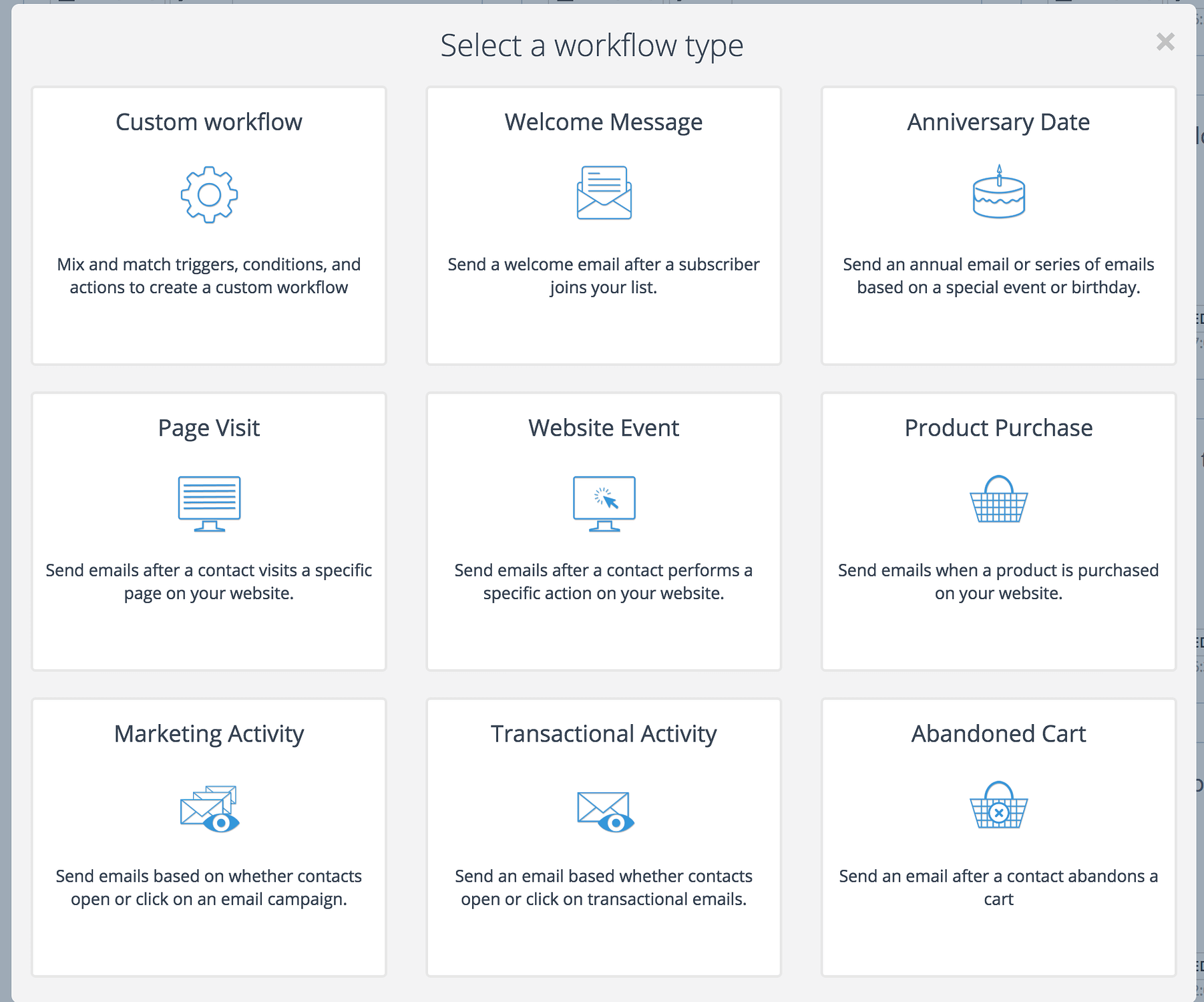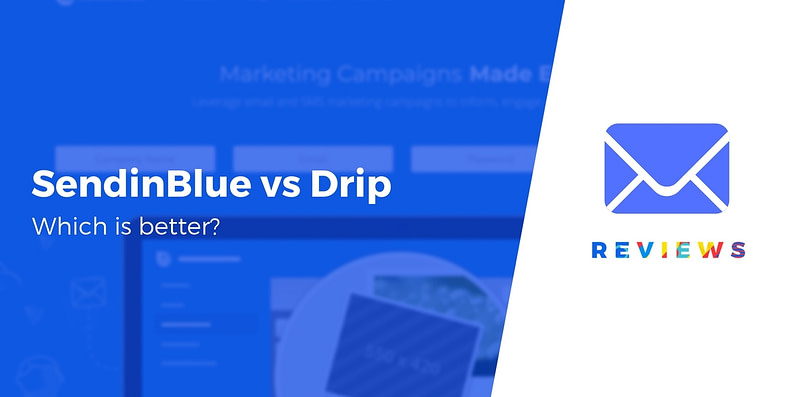If you want to take your business online, few things can have more impact on your results than email marketing. Even though email sounds like the online tool of the yesteryear, it’s, in fact, still one of the most effective channels to contact your leads or customers. And this is where the topic of Sendinblue vs Drip comes into play.
Sendinblue and Drip are two of the premier email marketing tools on the web. They are both powerful, both easy to use, and both deliver all the features that an online business might need to succeed.
Today, we compare them head to head and examine which is going to be better – based on your individual needs. Here’s Sendinblue vs Drip: 👇
📚 Table of contents:
🧰 Features: what you get from Sendinblue vs Drip
Both Sendinblue and Drip go way above what can be considered your “everyday email marketing software.” They can do so much more than just send email.
🏁 But let’s start at the beginning:
Yes, both Sendinblue and Drip will give you all the features you’d expect from a top-of-the-line email marketing solution. You can:
- manage your email lists
- send standard email marketing campaigns – aka. broadcasts
- build email messages inside a nice visual tool (with no coding or design skills required)
- create sign-up forms and publish them on your site
- choose from ready-made email templates
- split test your email messages
- develop using API – this allows you to create custom workflows or apps that integrate with your main email tool
- integrate with a set of third-party apps
- track your results
That being said, the above are just the tip of the iceberg. As it turns out, Sendinblue and Drip have a lot more to offer. Both platforms can serve as your main tool for communication with your audience or customers. And this goes above just email.
Let’s start with Sendinblue:
The true, standout feature of Sendinblue is their email automation module. This thing is really advanced and gives you a range of features and possibilities. At the same time, it’s easy to get started with and doesn’t require any complex setup.
For example, one of the things you’ll probably want to do first is send emails based on the user’s behavior in your shopping cart, or when they visit a specific page. Other scenarios are also possible, such as customer birthday, etc.

To take things one level above, you can also craft whole automation workflows based on the individual steps of action (or inaction) that the user has taken. You can consider a number of factors and then plan certain automation steps based on them.

Apart from email, Sendinblue allows you to also send SMS messages for a more direct touch point with your customers. This messaging module works in most countries but has different price points based on where you want to send SMS to.
Another interesting module in Sendinblue is their Facebook Ads integration. You can build your ads straight in Sendinblue and then export them to Facebook. The benefit you get here is that you can target your audience with less effort and in a more streamlined interface.

Lastly, Sendinblue also has a new Retargeting Ads module that helps you bring people back to your website. Sendinblue partners with AdRoll to make this feature possible.

Now onto Drip:
Drip markets itself as an e-commerce CRM first of all.
This overall approach does show when you browse through the features that are available, plus how everything is geared towards e-commerce store owners most of all.
The idea behind Drip is to make it possible for an e-commerce store to manage their customers inside a CRM-like interface, where you can create different scenarios based on the customers’ behaviors, purchasing history and more.
First, you can store all your customer data – no matter where you got that data from (your storefront, other marketing channels, etc.). Then, you can use that data when marketing to your people via Drip.
Drip bets on personalization as the no.1 tool to make your customers happy. This can be done by tailor-picking the products that a given customer is the most likely to resonate with.
With that, Drip can also help you reach your audience via Instagram, Facebook, SMS, and third-party integrations.
You also get access to clear status-like summaries for each of your customers and the actions they took in relation to your e-commerce store and marketing campaigns.

Drip helps you with deep segmentation and behavior-based automations. This helps you present each customer with a message that’s been prepared for them and built based on the actions that the person has taken in your store.

This whole idea you can take a long way, especially when put into automation workflows.

Drip is also very good at making your standard email campaigns easier to deal with. There are campaign templates that you can use for standard scenarios.

💸 Pricing
Pricing is very often the no.1 factor when picking your email marketing tool, so let’s see how Sendinblue vs Drip stack up against each other.
👉 Here’s Sendinblue pricing:

👉 And here’s Drip pricing:

💡 What’s important here:
First off, Sendinblue has a free plan. It allows you to send up to 300 emails a day (9,000 a month) to an unlimited number of subscribers.
Secondly, Sendinblue charges you “per email sent” while Drip charges “per contact”.
This quite a significant difference in pricing methodologies makes it hard to point out who’s cheaper or more expensive in general. It all depends on the number of contacts you have on your lists and the number of emails you want to send them.
Still, let’s say that you have 2,500 contacts and that you want to be contacting them once a week. This means roughly 12,000 emails sent per month.
- with Sendinblue, you can send 12,000 emails for $25 a month
- with Drip, this is going to cost you $39 a month
Actually, as we do the math, Drip only becomes cheaper if you’re planning on sending more than 10 emails per week to a list of 2,500 people.
That being said, and in all honesty, you should do your own calculations when picking between Sendinblue vs Drip – based on your projected number of emails and audience size.
🎨 Design and email templates
One important element of a good email marketing tool are quality email templates that you can import with a couple of clicks.
Sendinblue really doesn’t disappoint here, giving you access to more than 700 different templates. You get both classic email designs, multipurpose designs, as well as seasonal templates and purpose-built ones (for sales, promotions, birthdays, etc.).

All those templates are also optimized to be viewed on mobile devices.
Drip gives you access to only a handful of templates but lets you customize them however you see fit.

There aren’t any pre-made email templates, so to speak, and it’s up to you to adapt the simplistic designs that you get from Drip.
👐 Ease of use
Comparing Sendinblue vs Drip on the basis of ease of use isn’t an easy feat (no pun intended). Both platforms offer easy to grasp interfaces and an overall thought through user experience.
Sendinblue provides you with one main dashboard where you can find all the features and navigate to the individual sections. Since there’s a lot of elements in the dashboard, you’ll need to look around for a couple of minutes before you get the hang of it.

The email builder tool at Sendinblue, on the other hand, is very good-looking and not confusing, and it works with drag and drop:

Drip’s dashboard looks a bit clearer and highlights all the key features more effectively. The UI is overall easy to grasp even on the first go.

The builder part of the Drip interface looks very simplistic, which isn’t always an advantage. The feature set that you get with Sendinblue regarding email creation looks better.

🏆 Sendinblue vs Drip: which is better?
This one is tough to call since both Sendinblue and Drip are excellent email marketing tools, and they both provide good automation features!
But the devil is in the details. 😈
📢 Overall, I’d say the following:
- Drip has shifted its focus to serve as an e-commerce CRM, with all the pros and cons that go with it. The pros are that you basically get the whole package when it comes to the features you might need for communicating with customers as an e-commerce store owner. The cons are that Drip might not be the best fit if you run a business or website that’s not an e-commerce store.
- Sendinblue, on the other hand, looks like an overall more versatile email tool. Its focus is still on classic email marketing, automations, list segmentation, manual list management, and getting subscribers from various channels. Then, they also give you better tools for email design. Automation-wise, I also enjoy Sendinblue’s offering better, but that depends on what your needs are specifically. And let’s not forget that Sendinblue has a free plan, which might be enough for small websites. (Check out this list of other providers offering free plans.)
What do you think? Have you found your winner between Sendinblue and Drip? Let us know in the comments.
Free guide
4 Essential Steps to Speed Up
Your WordPress Website
Follow the simple steps in our 4-part mini series
and reduce your loading times by 50-80%. 🚀
Free Access
* This post contains affiliate links, which means that if you click on one of the product links and then purchase the product, we’ll receive a small fee. No worries though, you’ll still pay the standard amount so there’s no cost on your part.





















Or start the conversation in our Facebook group for WordPress professionals. Find answers, share tips, and get help from other WordPress experts. Join now (it’s free)!